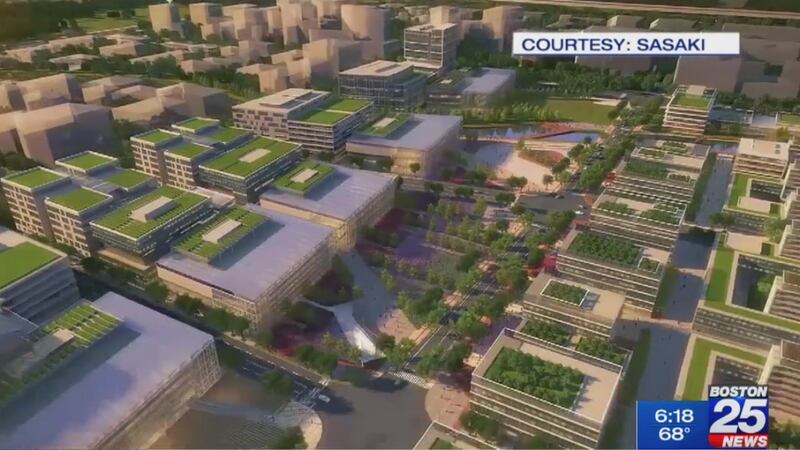BOSTON — There’s a debate going on about what city life will look like in a post-coronavirus world: How will cities look different and what will Boston look like?
Michael Grove of Boston global design firm Sasaki says even though we’ve seen people fleeing cities in order to quarantine, cities are a key to our survival as a human race. He says coronavirus has caused people to embrace being outside more — and that should be a key takeaway after the virus is gone.
“We’re already started to see some changes in how people are living because of the coronavirus. There’s a celebration of being outside in nature,” said Grove. And as many people flee heavily populated areas in favor of more space, there’s fear that moving into the woods and rainforests — animals’ natural habitats ― could lead to more zoonotic diseases, like coronavirus.
“The more we kind of push out suburban sprawl... kind of pushing out further and further and further from the city center, then you’re encroaching on those natural habitats and that’s where that biodiversity exists and the more you have contact with those existing species and those animals that allow for the crossover diseases to come into the human population, that’s where the real risk factor is,” said Grove.
Grove says that’s why Lyme Disease has exploded in New England. ”Lyme Disease is a result of suburbanizing our remnant forests. So the more you fragment those forests, the more exposure you have between humans and the tick populations.”
As a landscape architect, Grove says his job is to make cities more livable and equitable. His prescription for a post-covid-Boston centers around three key goals: a resiliency plan that prepares for flooding, creating more open space, and investing in urban agriculture.
“Ninety percent of our food that we eat in Boston is imported from outside our region,” said Grove. “Once you pick vegetables they’re losing about 30% of their nutrient value within three days and 80% after eight days of refrigeration. I’m actually proposing more urban agriculture, actually growing food having more productive landscapes within the city including urban indoor farms stacked vertically.”
Grove’s firm, Sasaki, is re-designing Boston City Hall Plaza and also helped shape the vision for the Seaport through planning and urban design. Sasaki is also working on a major project in Shanghai, China, where Grove says much can be learned and applied to Boston.
“We’re creating about a 1 square kilometer district that is just these vertical agricultural systems. It’s also one stop away from Shanghai Disneyland so we’re turning it into a destination as well as a place where foodies can come... where the food is fresh, and there can be learning and education opportunities for children and families — a kind of a ‘pick your own,‘” said Grove.
As for Boston City Hall and the Seaport, Grove says there will now be even greater thought given to how to make outdoor open spaces more aesthetically pleasing and inviting – doing away with the expanse of stairs outside and providing as much space for people to gather and spread out as possible.
Download the free Boston 25 News app for up-to-the-minute push alerts
>> Complete local and national coronavirus coverage here
RESOURCES:
- Massachusetts Coronavirus Information
- Boston Coronavirus Information
- Follow us on Facebook and Twitter | Watch Boston 25 NOW








